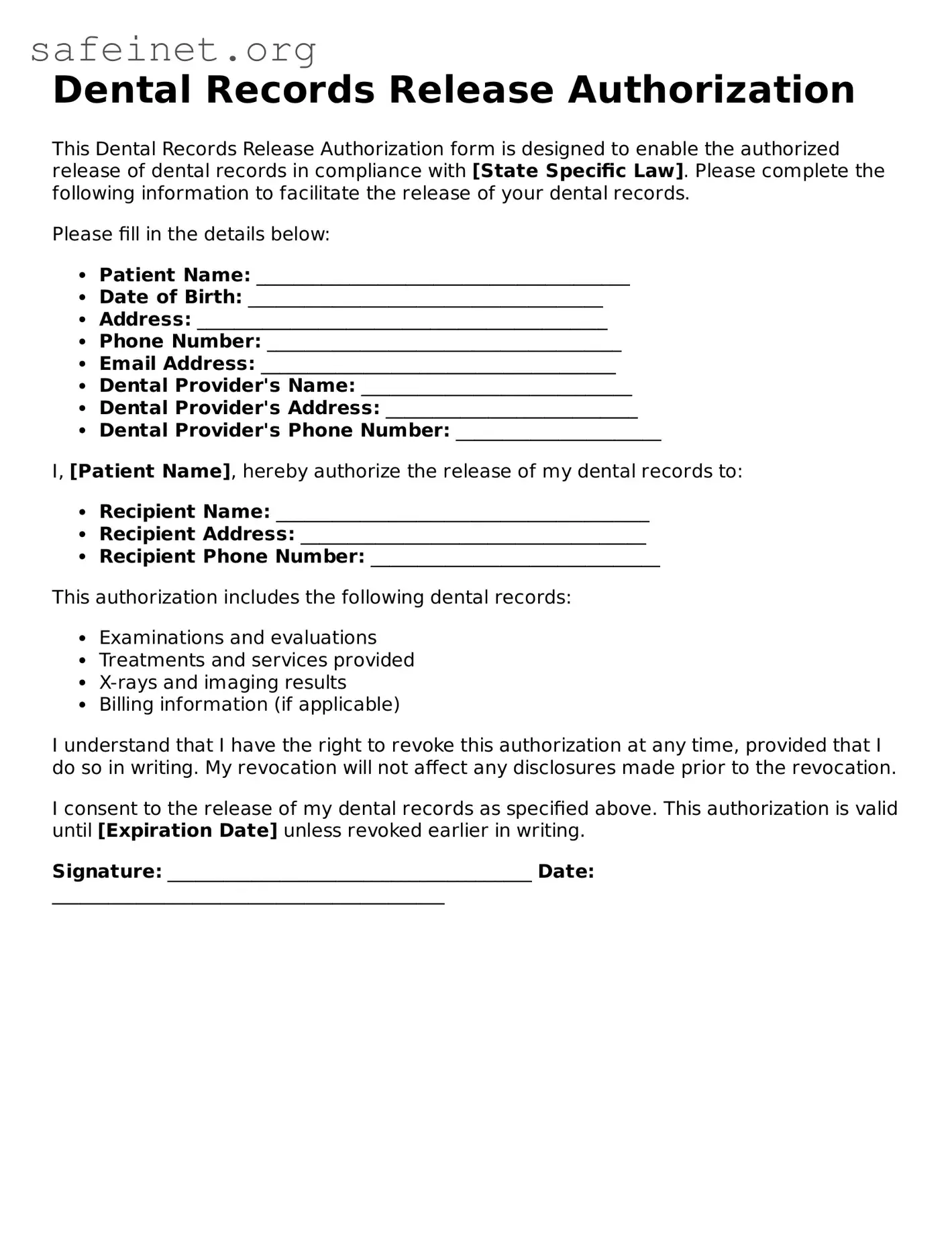What is a Dental Records Release form?
A Dental Records Release form is a document that allows a patient to authorize their dentist to share their dental records with another individual or organization. This could include another dentist, a specialist, or an insurance company. It helps ensure that your dental information can be easily transferred when needed.
Why do I need to sign a Dental Records Release form?
You need to sign this form to give permission for your dental records to be released. Dental records are considered confidential, and without your consent, a dentist cannot share the information. Signing the form ensures that your privacy is respected while allowing necessary access to your records.
Who can I authorize to receive my dental records?
You can authorize anyone to receive your dental records, including another dentist, a specialist, or an insurance company. Additionally, you may choose to have family members, legal representatives, or other healthcare providers included in your authorization.
How long is the Dental Records Release form valid?
The validity of a Dental Records Release form can depend on the policy of the dental office or the specific wording in the document itself. Generally, it's common for these forms to remain valid until either the treatment is completed or the patient revokes the authorization in writing.
Can I rescind my authorization after signing the form?
Yes, you can rescind your authorization at any time. If you decide to do so, it is important to notify your dental office in writing. They will then stop any further sharing of your records based on the previously signed form.
Is there a fee for obtaining copies of my dental records?
Many dental offices may charge a fee to prepare and send your records. This fee can vary based on the office's policies and the number of pages involved. It’s advisable to check directly with your dental provider for specific information regarding any costs.
Do I need to fill out a new form each time I want to share my dental records?
It often depends on the circumstances. If you are sharing records with a different provider or institution, you will likely need to fill out a new form. However, if you are repeatedly sharing with the same person or organization, a single form might suffice, as long as it remains valid.
What information is usually included in my dental records?
Your dental records typically include details such as your personal information, treatment history, notes from dental visits, X-rays, and any prescriptions or referrals. It is a comprehensive view of your dental health, which is important for any ongoing or future treatments.
